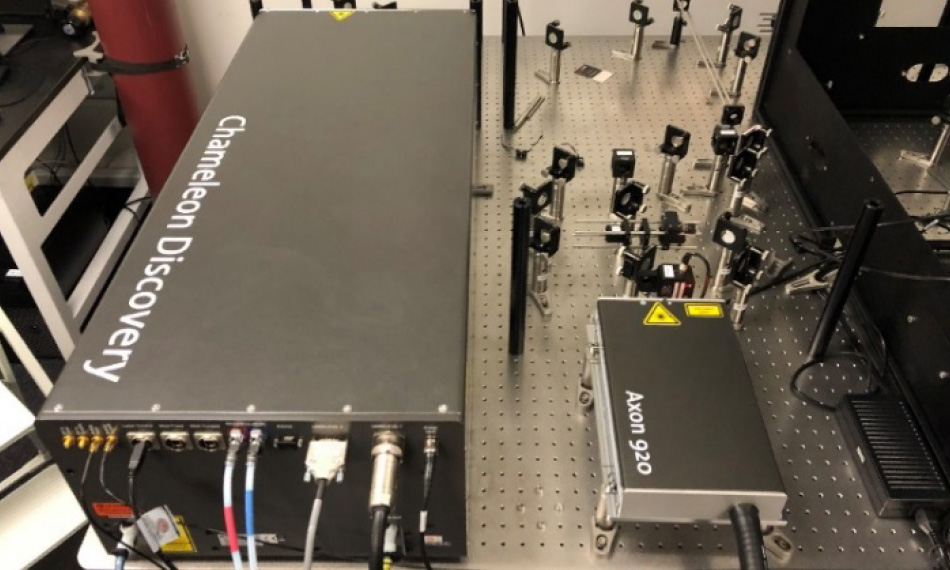ETRobot Fish Can Trick the Real Thing Behind The Scenes
The second generation of robotic fish developed in Dr. Maurizio Porfiri‘s Dynamical Systems Laboratory at Polytechnic Institute of New York University. Credit: Polytechnic Institute of New York University View full size image
This Behind the Scenes article was provided to LiveScience in partnership with the National Science Foundation.
Scientists have long turned to nature for inspiration and innovation. From unlocking the secrets of spider silk to create super-strong materials to taking hints from geckos for new adhesives, clues from the natural world often lead to advances in our practical world. But the relationship between engineering and nature has been largely one-directional, with humans reaping the majority of the benefits of discovery.
What if it was possible to close the loop, and combine human ingenuity and nature’s wisdom to protect a species or ecosystem?
Dr. Maurizio Porfiri, Assistant Professor of Mechanical Engineering at the Polytechnic Institute of New York University, is one step closer to that goal through his research into the behavior of schooling fish, which is funded by a prestigious NSF Faculty Early Career Development (CAREER) award. Porfiri’s findings led him to create a series of biologically inspired robots that may help preserve and protect marine life.
“Studies of schools of fish, flocks of birds and herds of animals have inspired robotic systems designed for our own applications,” said Porfiri. “But I wanted to see if I could close the gap, bringing some of those benefits back into the natural world.”
A lifelong animal lover who recalls childhood aspirations of becoming a zookeeper, Porfiri began his studies of fish schooling by examining how leadership is established within these populations. “Schooling fish have a rich system of information sharing,” explains Porfiri. “They decide when to school based on a wide variety of factors, including vision and pressure cues from other fish. By studying these cues, we can learn how school members recognize—and follow—a leader.”
Porfiri posited that if he could enforce leadership by an external member—in this case, a robot that actively engages the group—he could influence the direction and behavior of schooling fish. This could prove a life-saving advantage for marine populations in the event of oil or chemical spills or other natural disasters. Porfiri also envisions the ability to lead fish away from man-made dangers like turbines.
The first generation of the robot fish built in Dr. Maurizio Porfiri’s Dynamical Systems Laboratory at Polytechnic Institute of New York University were shaped less fishlike than the second generation, but real fish accepted them as schoolmates and even followed their leadCredit: Polytechnic Institute of New York UniversityView full size image
Porfiri’s background in dynamical systems, mechanics of advanced materials and underwater robotics aided in the creation of robotic “leader” fish that while not especially lifelike at first glance, are deceptively agile swimmers. When deployed in an environment with groups of gregarious fish, these robotic members have been effective at influencing the school’s behavior. Porfiri suggests that one of the secrets to the robots’ ability to successfully school with real fish may lie in their mimicry of the swim characteristics of real fish.
This first generation of robotic fish is capable of swimming along a plane, and future generations will be able to dive and surface. In laboratory observations, Porfiri and his team have noted a variety of interaction patterns between groups of gregarious fish and the underwater robot, including tracking, milling and following, hinting that the group’s behavior can be altered by a robotic member.
In the meantime, the NSF CAREER grant, which also supports community outreach, gives Porfiri the opportunity to take his work beyond the lab to recapture the old dream of spending his days at the zoo. Throughout the academic year, he and his students can be found at the New York Aquarium, where they nurture a passion for math, science and engineering among local elementary and middle school students. The young students engage in authentic robot design experiments, creating custom caudal fins for robotic fish. By deploying robots equipped with these fins during test swims, the classes learn how fin size and shape affect swimming performance.
Editor’s Note: This research was supported by the National Science Foundation (NSF), the federal agency charged with funding basic research and education across all fields of science and engineering. Any opinions, findings, and conclusions or recommendations expressed in this material are those of the author and do not necessarily reflect the views of the National Science Foundation. See the Behind the Scenes Archive.
自動翻譯僅供參考
機器魚以假亂真,足以騙過真實魚類 Robot魚可以欺騙背后的Scenes
動真格的第二代機器魚在理工學院開發的博士莫里吉奧Porfiri的動力系統實驗室紐約大學。
這幕后文章理工學院是提供給生活科學與國家科學基金會。
合作
長期以來,科學家們轉向了大自然的靈感和創新。從解鎖蛛絲的秘密打造超強材料,采取暗示從壁虎新的粘合劑,從自然界的線索往往會導致我們的實際世界的進步。但是,工程與自然的關系在很大程度上是單向的,與人類收獲了廣大發現的好處。
如果有可能關閉循環,并結合人類的智慧與自然&rsquo的;智慧來保護一個物種或生態系統?
博士。莫里吉奧Porfiri,機械工程助理教授在紐約大學的理工學院,是一步步接近這個目標通過他的研究的魚群,這是由著名的美國國家科學基金會教師早期職業發展(CAREER)獎勵資金的行為。 Porfiri大局;結果導致他創造了一系列的仿生機器人,可幫助維持和保護海洋生物。
u0026 QUOT;魚學校研究,鳥獸成群成群的啟發設計我們自己的應用程序的機器人系統, "說Porfiri。 "但我想看看我是否能縮小差距,使其中的一些好處放回自然界和QUOT;
終身動物愛好者誰回憶成為一名動物園管理員的童年愿望,Porfiri開始了他的魚群研究通過研究如何領導這些人口中建立。 "魚群有一個豐富的信息共享,&QUOT系統;解釋Porfiri。 "他們決定什么時候去學校基于各種因素,包括視覺和壓力的線索來自其他魚類。通過研究這些線索,我們可以學習的學校成員如何認識和mdash;并按照—一個領導者和QUOT;
Porfiri假定,如果他可以通過一個外部成員和mdash加強領導;在這種情況下,一個機器人,積極開展小組和mdash;他可以影響的方向和魚群的行為。這可以證明一個拯救生命的優勢,為中石油或化學品泄漏或其他自然災害時的海洋種群。 Porfiri還設想從人為的危險狀渦輪機離開導致魚類的能力。
第一代在紐約大學理工學院建于博士莫里吉奧Porfiri的動力系統實驗室機器人魚被塑造比第二代更小似魚,但真正的魚接納他們為同學甚至跟著他們leadCredit:紐約UniversityView原圖
Porfiri&rsquo的理工學院;的背景在動力系統,先進的材料和水下機器人的幫助在創造機器人&QUOT力學;領導者和QUOT;魚,雖然第一眼看上去不是特別逼真,看似十分敏捷的游泳者。當部署在與群居魚類群體的環境中,這些機器人的成員一直在影響學校和rsquo的效益;行為。 Porfiri表明,秘密機器人&rsquo的一個;成功學校真魚可能在于的真魚在游泳特色的模仿能力。
這第一代機器魚能夠沿著一個平面游泳,子孫后代將能夠深入和表面。在實驗室的觀察,Porfiri和他的團隊指出各種各樣的群居魚,水下機器人,包括跟蹤,銑削和以下組之間的互動模式,暗示該集團&rsquo的;行為可以由機器人成員。
在改變與此同時,美國國家科學基金會CAREER資助,同時也支持社區服務,使Porfiri拍到了他超出了實驗室的工作奪回度過他的日子在動物園的舊夢。在整個學年,他和他的學生們可以在紐約水族館,在那里他們培育在當地小學和初中學生的數學,科學和工程的熱情被發現。青年學生從事真正的機器人設計實驗,創建自定義尾鰭的機器魚。通過部署在測試游泳配備這些鰭機器人,類學習的大小和形狀如何鰭影響游泳的表現。
編者按:這項研究是由美國國家科學基金會(NSF),美國聯邦機構,負責資助基礎研究和支持跨越科學與工程的各個領域的教育。任何意見,研究成果和結論或表達這種材料的建議是那些作者的,并不一定反映國家科學基金會的意見。見幕后存檔的背后。.
-
機器人
+關注
關注
211文章
28565瀏覽量
207713
發布評論請先 登錄
相關推薦
安泰功率放大器如何驅動20kHz水聲換能器超聲驅魚

固態光源點亮熒光原位雜交技術---提升生物醫學研究和臨床診斷新選擇

物聯網平臺在魚菜共生養殖系統中的應用
LoRa模塊如何應用于魚類養殖?
ATA-L8水聲功率放大器在超聲驅魚中的作用是什么





 機器魚以假亂真騙過真實魚類
機器魚以假亂真騙過真實魚類













評論